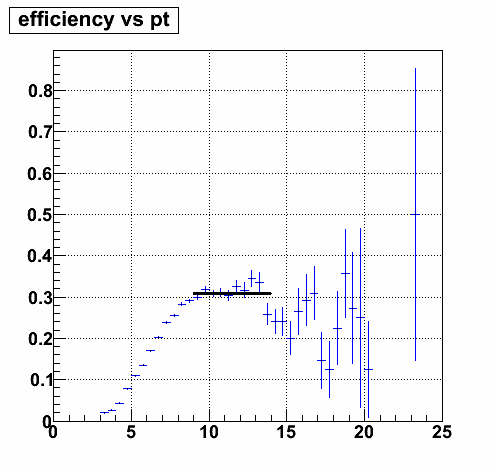Summary of run 6 simulation analysis
At first (http://drupal.star.bnl.gov/STAR/blog/ncolmena/2011/jun/27/run-6-simulation-fit-curious-pion-centroid), the pi0 analysis yielded a pT-dependent drift in the pion centroid from below the true 135 MeV mass at lower pT, and much higher than the true mass at higher pT as well as no evidence for eta mesons.
The second look at the simulation (http://drupal.star.bnl.gov/STAR/blog/ncolmena/2011/jul/06/2nd-attempt-run-6-simulation), a full trigger simulator was included in the code/macro to emulate the L2Egamma trigger (StTriggerSimuMaker and StL2_2006EmulatorMaker). This set still expressed a drift in the pion centroid.
The third look at the simulation (http://drupal.star.bnl.gov/STAR/blog/ncolmena/2011/jul/20/another-look-run6-simulation) was done because it was realized that in the pion macro, the vertex for each event was set to 0. In this set, the actual vertex distribution was used. The centroids for each pT bin aren't spot-on with the true 135 MeV mass, but the drift is much less drastic and closer to the true mass. Using the eff.C macro that is used to obtain a rough efficiency calculation as a function of pT and energy, the efficiency was very low at around 5%.
The most recent stab at the simulation (http://drupal.star.bnl.gov/STAR/blog/ncolmena/2011/jul/30/revised-look-run-6-simulation) was done because of this unusual low value of the efficiency. In the code, Weihong defined two different R squared values: one for simple MC simulations (di-pions) and the other for pythia simulations. It turned out that the simple MC R squared value was being used in all the past looks at simulation. This was remedied, and the efficiency (vs. pT) yielded a more acceptable value of ~30%. The pion centroids for each pT bin look about the same as the last (third) look at the simulation.

- ncolmena's blog
- Login or register to post comments
